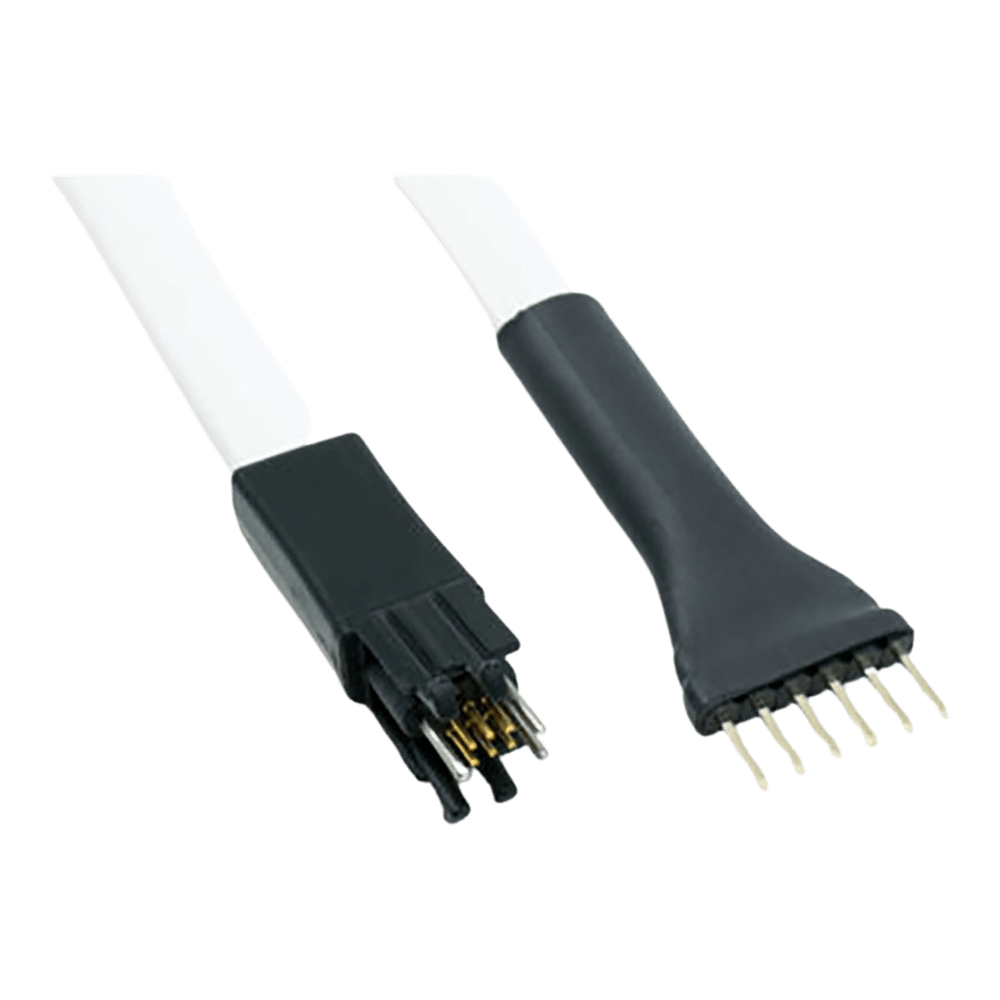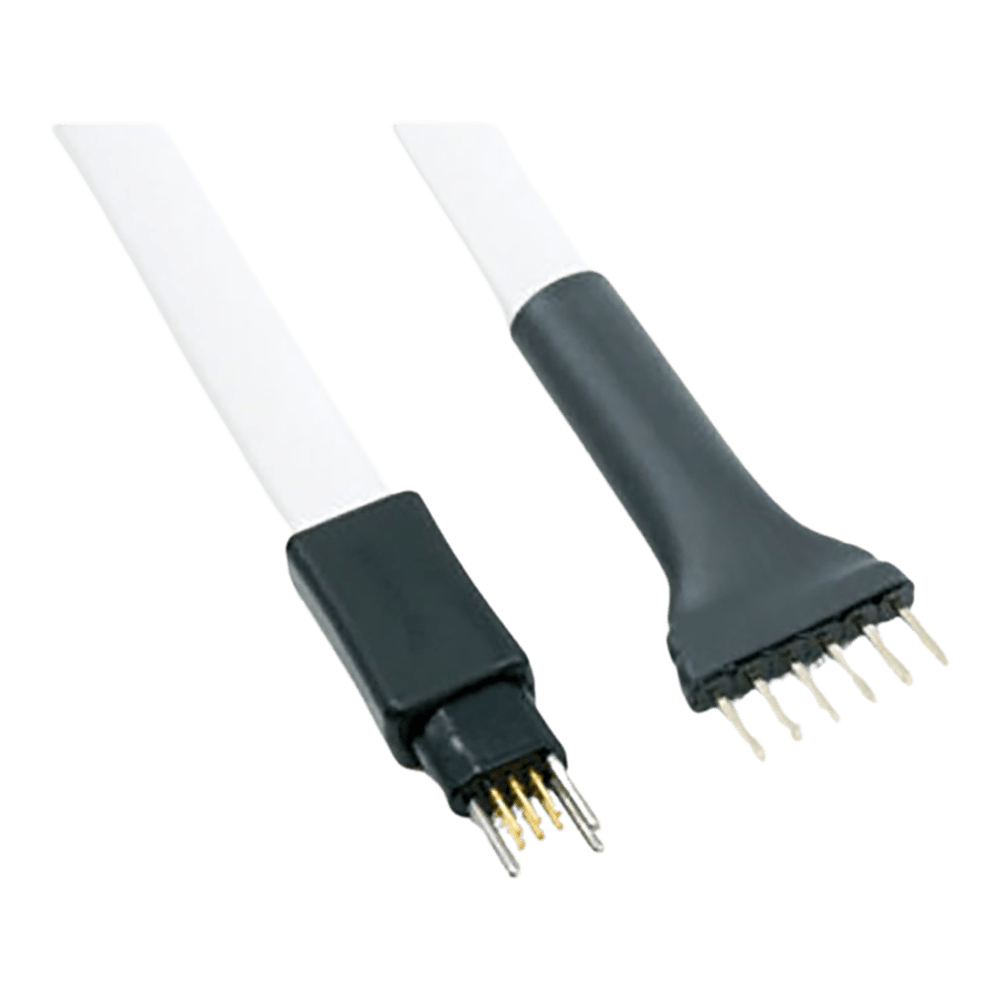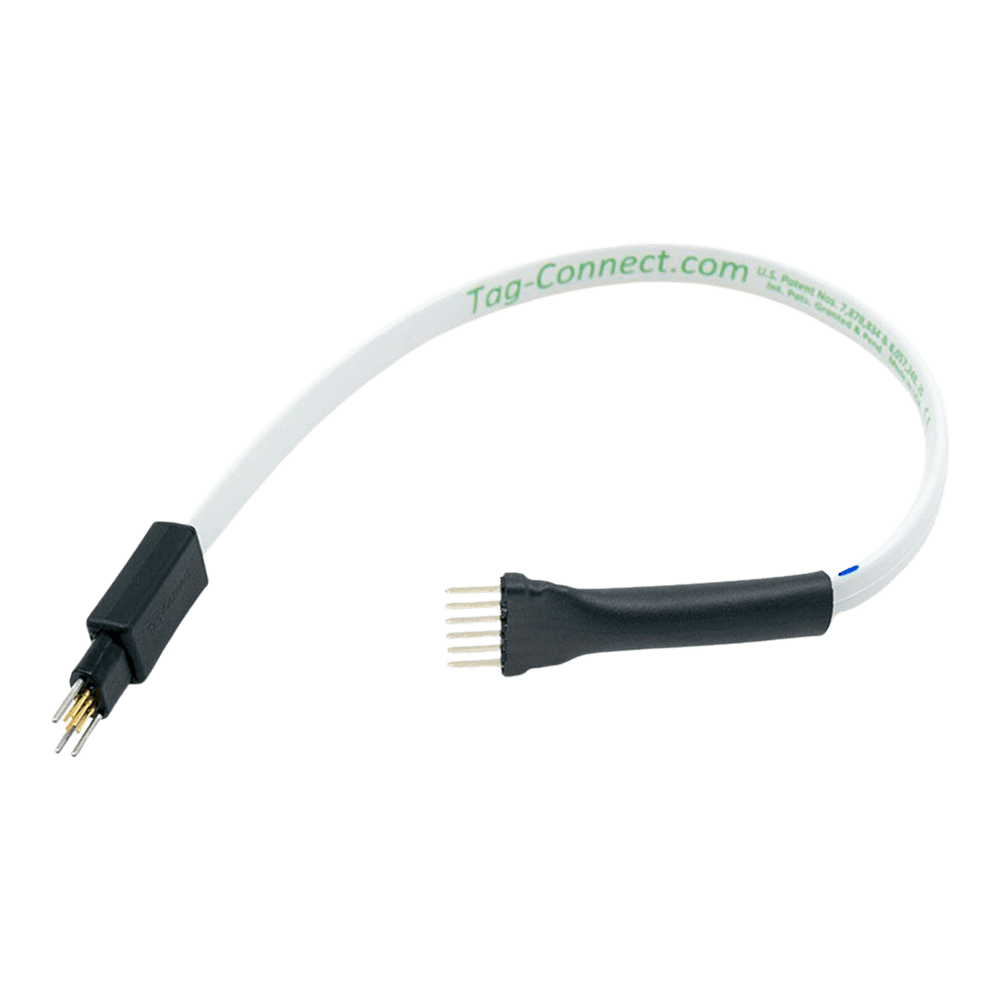



Key Features
Overview
Downloads
Why Engineers Choose The Tag Connect TC2030-PKT-Kabel
Space-Critical Designs
Development Efficiency
Cost Reduction
Das Programmier-/Debugging-Kabel Tag-Connect TC2030-PKT ist in erster Linie für den Einsatz in Entwicklungsumgebungen vorgesehen, eignet sich aber auch ideal für die Produktionsprogrammierung. Die federbelasteten Kontaktstifte werden durch vier Kunststoffbeine fest an ihrem Platz gehalten, von denen jedes sicher in sein Positionierungsloch einrastet.
Der Tag-Connect TC2030-PKT ist ideal, wenn Sie über einen längeren Zeitraum eine Verbindung zur Leiterplatte aufrechterhalten müssen, beispielsweise bei Test- oder Entwicklungsarbeiten.
| General Information | |
|---|---|
Part Number (SKU) |
TC2030-PKT
|
Manufacturer |
|
| Physical and Mechanical | |
Weight |
0.1 kg
|
| Other | |
EAN |
5055383665280
|
Frequently Asked Questions
Have a Question?
-
Are there alternatives for other programmer brands besides PICkit?
Yes, Tag Connect offers cables for various programmers. For ARM Cortex debugging, see our TC2030-CTX series. For generic applications, consider the TC2030-IDC with ribbon connector.
-
How do I ensure proper pin 1 orientation when connecting?
The TC2030 footprint includes alignment holes that prevent incorrect insertion. Pin 1 is typically marked on the PCB silkscreen, and the cable can only be inserted in the correct orientation.
-
Can I use the TC2030-PKT for debugging as well as programming?
Yes, the TC2030-PKT supports full debugging capabilities including breakpoints, single-stepping, and real-time variable monitoring when used with compatible PICkit debuggers.
-
What microcontroller families are supported?
The TC2030-PKT supports all Microchip PIC, dsPIC, and PIC32 microcontrollers that use standard ICSP programming. This includes 8-bit, 16-bit, and 32-bit device families.
-
Does the TC2030-PKT require external power during programming?
No, the PICkit programmer supplies target power through the VDD pin. However, you can also use external power if your application requires it during debugging.
-
How many programming cycles can the TC2030-PKT handle?
The spring-loaded pogo pins are rated for over 100,000 connection cycles, making them suitable for both development and high-volume production programming applications.
-
Can the TC2030 footprint be placed on the bottom of the PCB?
Yes, the TC2030 footprint can be placed on either side of the PCB. Bottom placement is particularly useful for space-constrained designs where top-side component density is critical.
-
What PCB design considerations are required for the TC2030 footprint?
The footprint requires six contact pads and four alignment holes. Critical requirements include no solder paste on contact pads, 0.020" clearance around pads, and proper paste mask layer configuration in your CAD software.
-
Which PICkit models are compatible with the TC2030-PKT?
The TC2030-PKT works with Microchip PICkit 3, PICkit 4, and PICkit 5 programmers. It connects via the standard 6-pin 0.1" SIP interface found on all these models.
-
What's the difference between TC2030-PKT and TC2030-PKT-NL versions?
The TC2030-PKT features four plastic legs that clip into PCB holes for secure retention during debugging. The TC2030-PKT-NL (no legs) version has a smaller footprint and is hand-held during programming, making it ideal for production environments.




